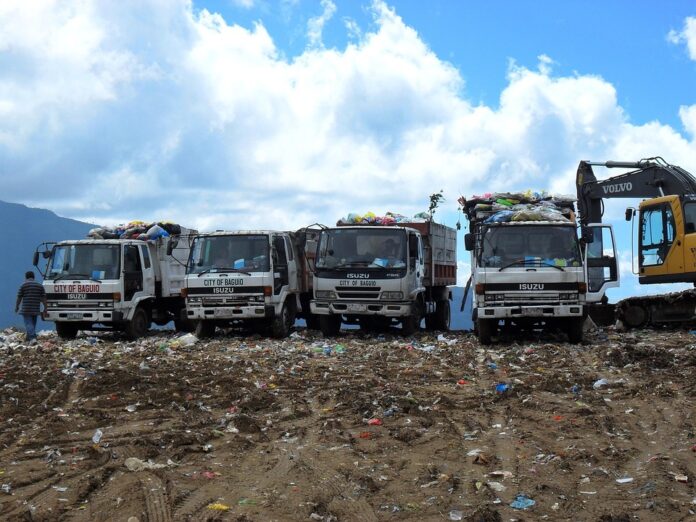Introduction
Waste management is a crucial aspect of operating any food facility, whether it be a restaurant, cafeteria, or food processing plant. Proper waste collection bins and segregation systems are essential for maintaining cleanliness, adhering to regulations, and promoting sustainability. In this report, we will delve into the importance of waste collection bins and segregation systems for food facilities, explore industry insights, and provide recommendations for effective waste management practices.
Overview of Waste Collection Bins
Waste collection bins are containers used to store various types of waste generated in food facilities. These bins come in different sizes, shapes, and materials to accommodate different types of waste streams. Common types of waste collection bins include general waste bins, recycling bins, compost bins, and hazardous waste bins.
Types of Waste Collection Bins
1. General Waste Bins: These bins are used to collect non-recyclable and non-compostable waste, such as packaging materials, disposable utensils, and non-biodegradable food scraps.
2. Recycling Bins: Recycling bins are used to collect recyclable materials, such as paper, cardboard, plastic, glass, and metal. These materials can be processed and reused to reduce the environmental impact of waste disposal.
3. Compost Bins: Compost bins are used to collect organic waste, such as food scraps, vegetable peels, and coffee grounds. These materials can be composted to produce nutrient-rich soil for gardening and landscaping.
4. Hazardous Waste Bins: Hazardous waste bins are used to collect chemicals, cleaning agents, and other potentially harmful materials that require special handling and disposal procedures.
Benefits of Using Waste Collection Bins
Proper waste collection bins offer several benefits for food facilities, including:
– Improved sanitation and hygiene: Waste bins help contain and manage waste, reducing the risk of contamination and pest infestations.
– Regulatory compliance: Food facilities are required to properly manage and dispose of waste according to local regulations. Using designated waste bins helps ensure compliance with these regulations.
– Cost savings: Effective waste management can lead to cost savings through reduced waste disposal fees and improved efficiency in waste handling processes.
– Environmental sustainability: Recycling and composting waste materials can help reduce the environmental impact of food facilities and promote sustainability.
Segregation Systems for Food Facilities
Segregation systems are used to separate different types of waste at the source, making it easier to recycle, compost, or dispose of waste appropriately. Implementing a segregation system in a food facility involves creating designated areas for different types of waste and providing clear guidelines for employees on how to segregate waste.
Components of a Segregation System
1. Color-coded bins: Using color-coded bins for different waste streams can help employees easily identify where to dispose of their waste. For example, green bins may be used for compostable waste, blue bins for recycling, and black bins for general waste.
2. Signage and instructions: Clear signage and instructions should be posted near waste collection bins to educate employees on how to properly segregate waste. This can help reduce contamination and improve the effectiveness of the segregation system.
3. Training and awareness: Providing training to employees on the importance of waste segregation and how to properly use the segregation system is essential for its success. Regular reminders and updates on waste management practices can help maintain compliance and efficiency.
Industry Insights
The waste management industry for food facilities is growing rapidly, driven by increasing awareness of environmental issues and regulatory requirements. According to a report by Market Research Future, the global waste management market is projected to reach $484.9 billion by 2025, with a compound annual growth rate of 6.1%.
Major waste management companies, such as Waste Management Inc., Republic Services Inc., and Veolia Environment, provide waste collection and disposal services for food facilities. These companies offer a range of solutions, including waste collection bins, segregation systems, recycling programs, and hazardous waste management services.
Recommendations for Effective Waste Management
To optimize waste management in food facilities, consider the following recommendations:
1. Conduct a waste audit to assess the types and volumes of waste generated in your facility. This information can help identify opportunities for waste reduction, recycling, and composting.
2. Implement a comprehensive waste management plan that includes waste collection bins, segregation systems, and employee training. Engage employees in the waste management process to promote compliance and participation.
3. Monitor and track waste management metrics, such as waste diversion rates, landfill diversion rates, and cost savings. Use this data to evaluate the effectiveness of your waste management practices and identify areas for improvement.
In conclusion, waste collection bins and segregation systems play a critical role in managing waste in food facilities. By implementing effective waste management practices, food facilities can improve sanitation, reduce costs, comply with regulations, and promote environmental sustainability. Investing in proper waste collection bins and segregation systems is essential for the success of any food facility’s waste management program.




